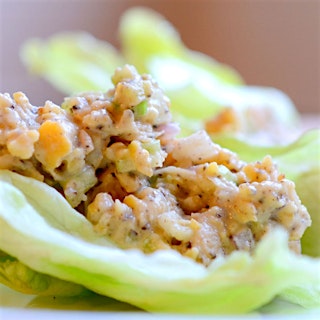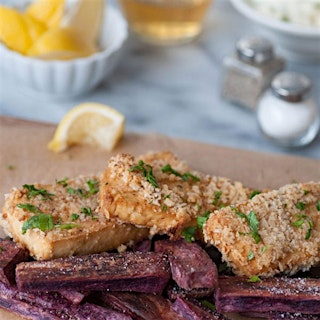Cut Out or Cut Down On Seafood
What’s Inside
What’s In
- Enjoy veggie-based fish substitutes in moderation.
- Vegetable-based sushi is available at most sushi restaurants, and has a seafood flavor due to the nori (sea vegetable wrapper).
- If you slip, forgive yourself and move on. The goal is not perfection, but small gradual improvement to a healthy lifestyle.
- To add seafood flavor to your food, sprinkle on sea lettuce, nori, or wakame (sea vegetables).
What’s Out
- Avoid fillet fish, fish-derived products, and shellfish.
- Some sauces are made with fish additives, such as Caesar dressing, some Asian curries, and Worcestershire sauce. Read labels.
- Ask if your miso soup is vegetarian; some miso soups are prepared with bonito, niboshi, and/or katsuobushi (all used for fish stock).
Why This Is A Good Idea
The dietary guidelines allow for small amounts of fish in a healthful diet. However, fish is not necessary for optimal health. A low fish or fish-free diet can be very protective, depending on what’s in it! A diet based mainly on whole plant foods is your best bet for longevity and disease prevention. Include plenty of unprocessed vegetables, fruits, legumes/nuts/seeds, and whole grains.
Concerned about mercury exposure from fish? You should be – seafood is the #1 source of mercury poisoning worldwide. The highest levels of mercury are found in large, long-living predatory fish such as king mackerel, shark, swordfish, and tilefish. The lowest mercury fish include anchovies, catfish, shellfish, flounder, salmon, sardines, and talapia. Tuna falls somewhere in the middle, and varies by species; light tuna has about a third of the mercury as albacore.
Worldwide demand for fish is taxing our environment in many ways. Overfishing wreaks havoc on marine ecology and the food chain, and is a direct cause in loss of biodiversity and marine habitat destruction.
If you’re trying to shift to a more plant-based eating style, fish may be the last “flesh” food to go. Know you’re doing a good thing for your health, the environment and for the welfare of marine life.
Basic Tips
- Check in whenever you a) consciously avoid fish by making a checkmark on the check-in screen, or b) eat by using a slip (aka free pass) on the check-in screen. If you realize you’ve made it the entire day without any fish, check-in by making a checkmark at the end of the day.
- Focus on plant-based sources of omega-3 fatty acids (which are abundant in fish and may be low in diets free of or low in fish). Eat plenty of walnuts, flax seeds, chia seeds, soybeans and tofu, sea vegetables, leafy greens, and brussels sprouts. Flax oil and canola oil are also good sources, but use moderately or sparingly depending on your health goals.
Shopping List
- Sea vegetables such as nori, wakame, dulse, and sea lettuce
- Veggie-based “fish” substitutes (in moderation)
- Vegan miso soup mix or prepared in a box
- Vegan Worchestershire sauce (if you use it in cooking) – find it online and in health food stores
- Beans (dried or canned), which can be used for “Tu-No” salad
- Medium or firm tofu (which can be sliced, baked and served as you would fish fillets)
- Mushrooms, which have a meaty texture and can be used in many recipes to mimic classic fish dishes
Recipes
Tuna-Less Salad by Rouxbe Online Professional Plant-Based Cooking School 
Oven-Fried “Fish” and Chips by Veganosity.com 
Note: Diet ID is not focused on the number on the scale. Weight loss can be a byproduct of developing healthier eating habits, but if you have questions about your weight, please contact your physician.